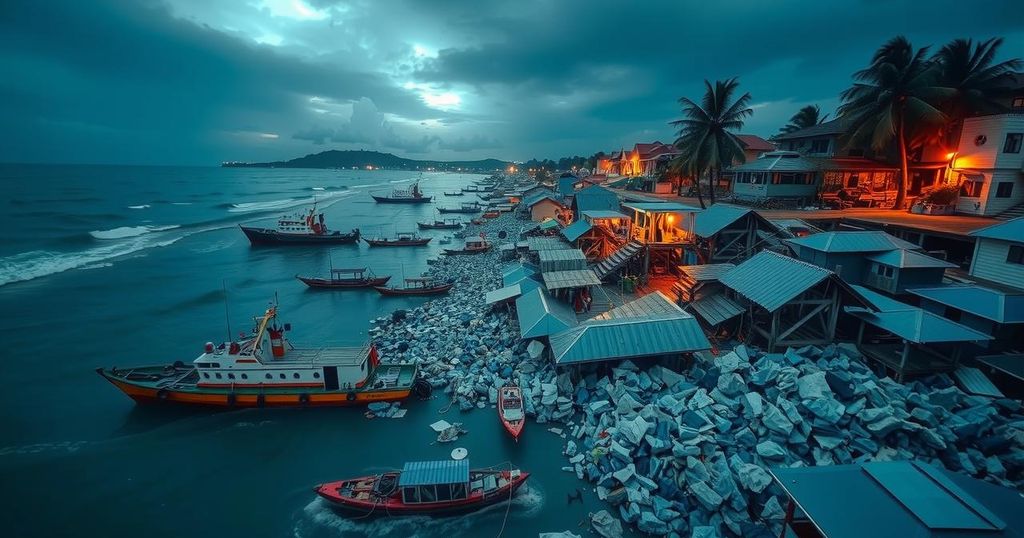This article reflects on the 20-year anniversary of the 2004 Aceh tsunami, analyzing its impact on Indonesia and the region. It discusses the ongoing risks associated with Indonesia’s geological position and highlights advancements in disaster preparedness and mitigation strategies post-tsunami. Collaboration among various stakeholders is emphasized as crucial for effective disaster risk management.
As we commemorate the 20th anniversary of the Aceh tsunami, it is imperative to reflect on the devastating impact this natural disaster had on Indonesia, which was exacerbated by a long-standing armed conflict in the region. The tsunami, triggered by a 9.1 moment magnitude earthquake off the coast of Aceh, caused significant destruction, claiming over 227,000 lives across multiple countries, with Aceh bearing the brunt of the loss.
The earthquake and tsunami highlighted Indonesia’s vulnerability, given its location within the Pacific Ring of Fire, an area characterized by the intersection of major tectonic plates. This geographical reality poses ongoing risks, as it is home to numerous megathrust zones that could generate catastrophic earthquakes and tsunamis. Recent research using advanced tsunami data analysis techniques revealed the original earthquake’s magnitude was likely 9.2 Mw, indicating a need for ongoing vigilance and preparedness.
In the aftermath of the disaster, the Indonesian government and various stakeholders established measures to enhance disaster mitigation, emphasizing community education and earthquake-resistant infrastructure. The passage of the Disaster Management Law in 2007 marked a significant step towards collaborative risk reduction efforts, unifying the roles of government, academia, media, corporations, and civil society in a framework known as the “pentahelix.”
In the years since the tsunami, extensive research has enhanced our understanding of seismic activity and disaster preparedness. Collaborative studies have advanced the science of earthquakes and tsunamis, empowering Indonesia to implement more effective early warning systems and earthquake response protocols. The commitment to improve disaster resilience remains strong amidst the challenges posed by tectonic movements.
The 2004 Aceh tsunami serves as a critical reminder of the profound natural disasters that can strike vulnerable regions like Indonesia, particularly given its location at the intersection of several tectonic plates. The country has a history of seismic events and associated tsunamis, which threaten coastal communities. The recent advancements in mitigating these risks reflect the knowledge gained from the devastating events of the past. As Indonesia continues to develop its disaster response strategies, recognizing the multifaceted nature of disaster management—encompassing scientific research, community engagement, and government policy—becomes increasingly vital.
In conclusion, the 20 years since the Aceh tsunami have demonstrated both the devastating impact of such natural disasters and the importance of comprehensive disaster preparedness and mitigation strategies. Indonesia’s efforts to improve resilience through collaboration among government, academia, media, corporations, and communities underscore the shared responsibility in addressing disaster risks. As new challenges emerge, maintaining a commitment to innovation in disaster research and community preparedness will be essential for safeguarding vulnerable populations in the future.
Original Source: theconversation.com






